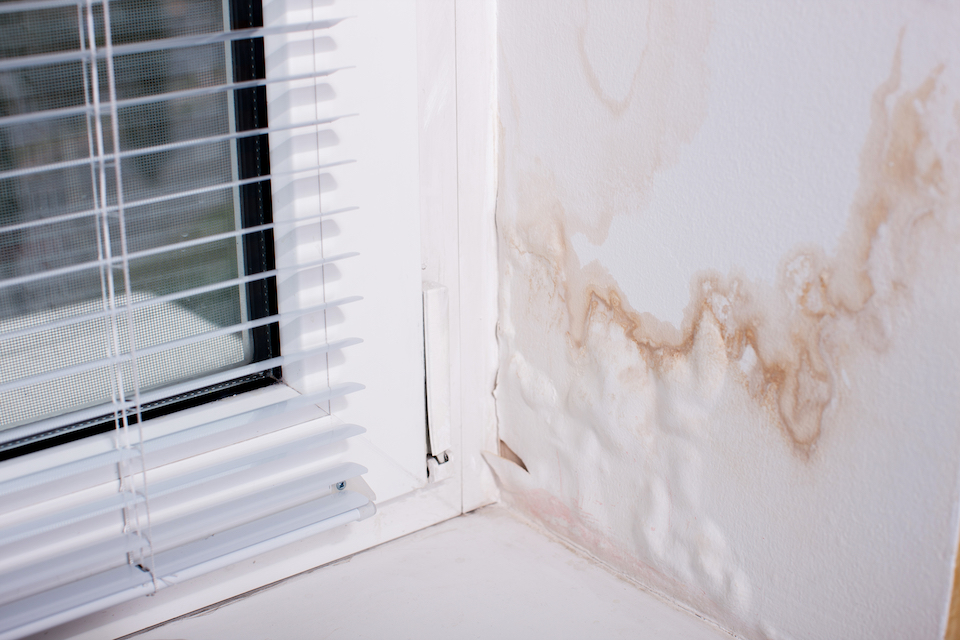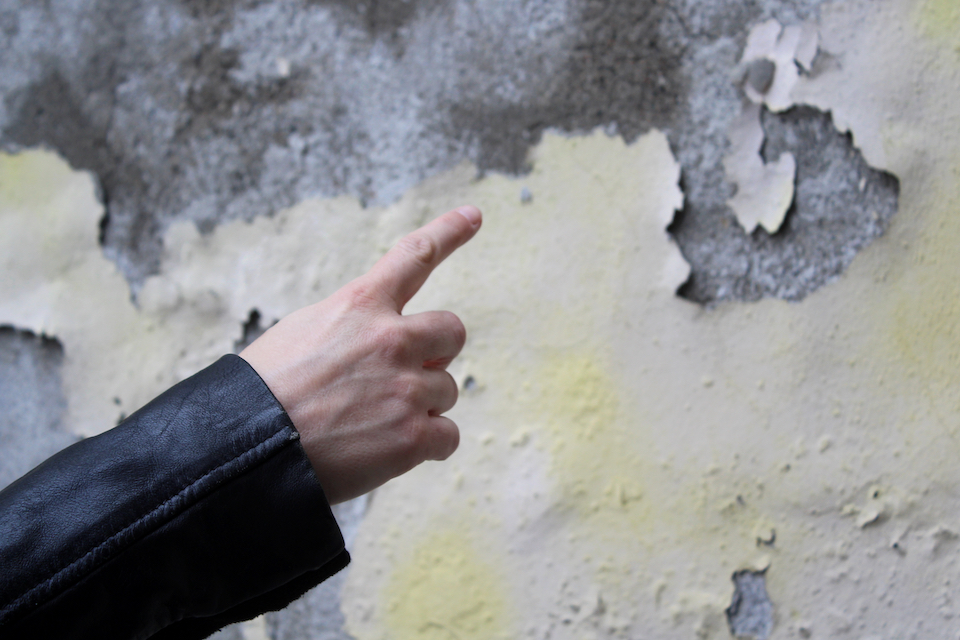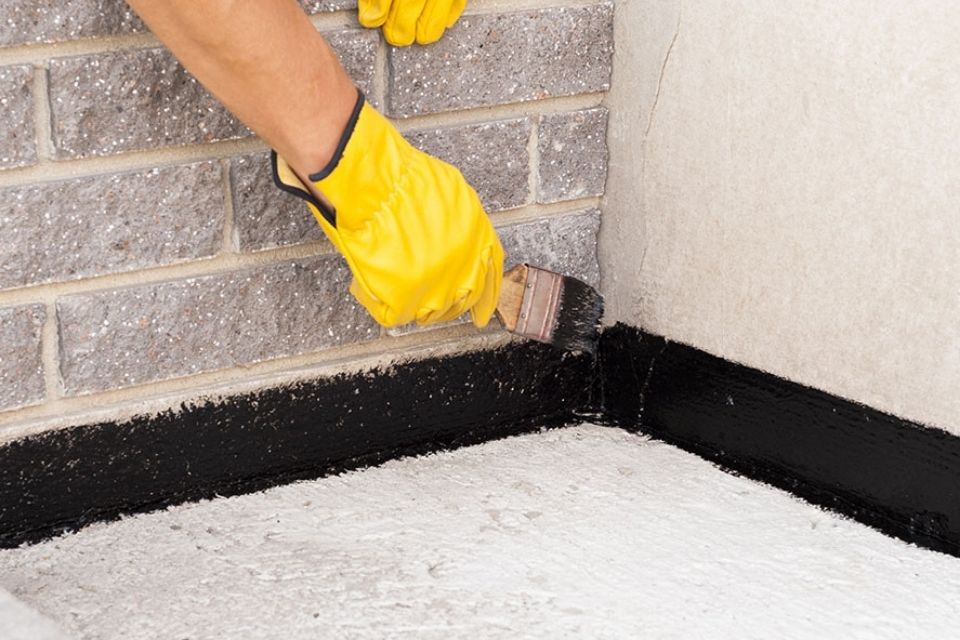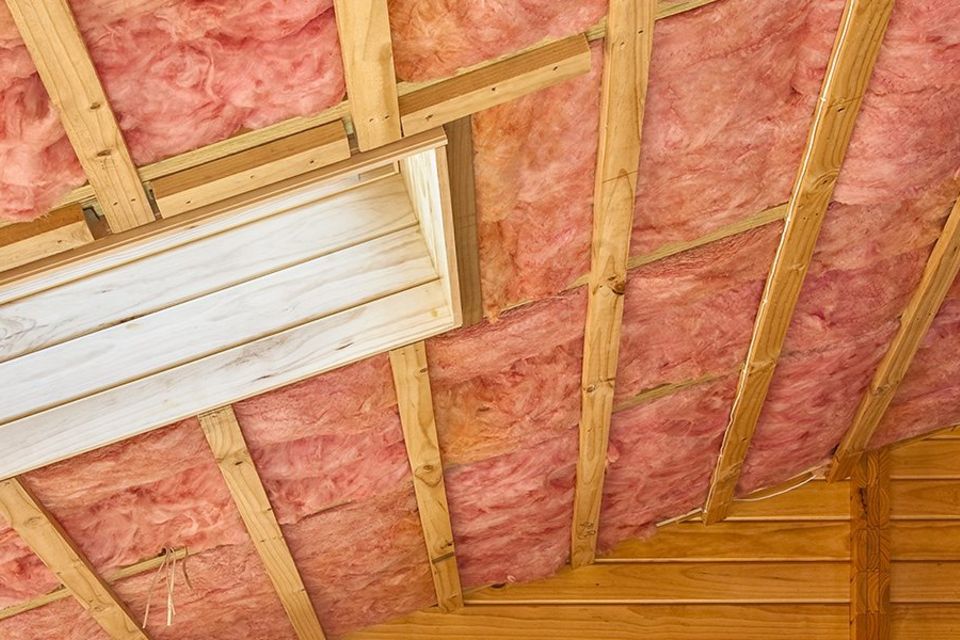How Much Does It Cost to Treat Penetrating Damp?
So, how much does treating penetrating damp cost, exactly?
The cost of treating penetrating damp will depend on factors such as the extent of the damage and the type of method used.
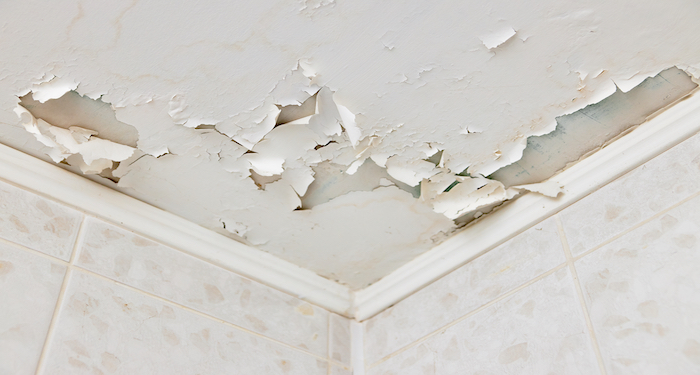
In most cases, treating penetrating damp is less expensive than treating rising damp. Penetrating damp generally involves mending a window seal or gutter as well as any damage to internal plaster.
The cost of penetrating damp treatments will vary, however, this task would likely cost somewhere between £150 and £250.
To clear out a blockage related to penetrating damp, expect to pay around £150 to £350. If water from an outer wall is penetrating an inner wall, having a basic cavity tray may be the solution needed.
For this job, you'd need to budget about £200 to £300 for a wall that is one metre long.
Should a specialist discover a weakness in a wall, a fresh damp proof course (DPC) would cost about £130 to £200 for a one-metre wall or around £300 to £500 for a five-metre wall, with additional prices applying for walls with sizes between one and five metres in length.
Another damp proofing approach used involves coating an exterior wall with exterior damp proof paint.
If you have exteriors that are allowing penetrating damp, this paint would be applied as an after-care solution once the actual damage has been fixed. This job would cost about £100 to £300.
However, other, less common forms of penetrating damp treatment would be substantially more expensive. For example, the average cost of damp proofing external walls (including as a means of preventing or addressing penetrating damp) would land from around £1,300 to £1,700.
Penetrating Damp Treatment Prices
| Type | Labour Cost | Supply Cost | Total Costs^ |
|---|---|---|---|
| Mending Window Seal/Gutter* | £50 to £240 | £2 to £10 | £150 to £250 |
| Clear a Blockage | £150 to £340 | £2 to £10 | £150 to £350 |
| Adding a Basic Cavity Tray | £180 to £200 | £20 to £100 | £200 to £300 |
| Fresh DPC for a 1 Metre Wall | £130 to £190 | £2 to £10 | £130 to £200 |
| Fresh DPC for a 5 Metre Wall | £300 to £490 | £2 to £10 | £300 to £500 |
| Exterior Damp Proof Painting a Wall | £90 to £270 | £10 to £30 | £100 to £300 |
| Damp Proofing External Walls | £1,200 to £1,500 | £100 to £200 | £1,300 to £1,700 |
*Again, this would include repairing any internal plaster damage.
^The lower amounts in the price ranges given are rounded up to the nearest ten.
- How Much Does It Cost to Treat Penetrating Damp?
- What are the Supply Costs for Penetrating Damp Treatments?
- What are the Additional Costs of Treating Penetrating Damp?
- Tradesmen Costs for Treating Penetrating Damp
- Benefits of a Damp Survey
- What is The Difference Between Penetrating Damp & Rising Damp?
- How Long Does a Penetrating Damp Treatment Take?
- Types of Penetrating Damp Treatments
- FAQs
- Sources
What are the Supply Costs for Penetrating Damp Treatments?
We'll now look at the supply/material costs involved in treating penetrating damp. This excludes the cost of labour.
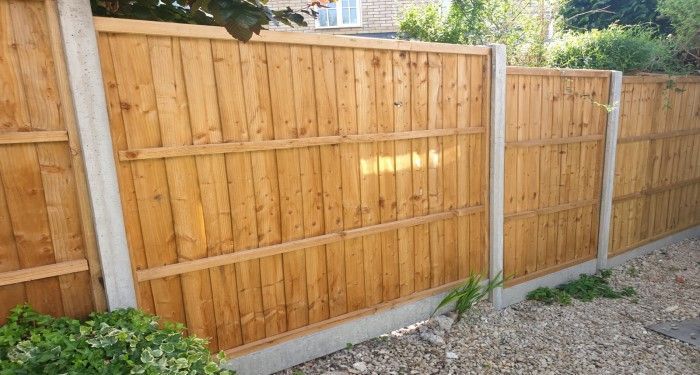
These costs cover the prices of purchasing supplies directly from the retailer.
While it is sometimes possible to treat penetrating damp DIY, you should only do so if you totally understand the process involved.
Average supply costs:
- Mending Window Seal/Gutter - £2 to £10
- Clear a Blockage - £2 to £10
- Adding a Basic Cavity Tray - £20 to £100
- Fresh DPC for a 1 Metre Wall - £2 to £10
- Fresh DPC for a 5 Metre Wall - £2 to £10
- Exterior Damp Proof Painting a Wall - £10 to £30
- Damp Proofing External Walls - £100 to £200
What are the Additional Costs of Treating Penetrating Damp?
When penetrating damp treated, there may be other jobs you'll want to consider in addition. Here are some examples:
Exterior Damp Proof Painting
Upon having a wall damp proofed (and possibly repaired), it may be necessary to have the surface painted with exterior damp proof paint by a damp proofing specialist. This job would cost around £100 to £300 for a single wall.

Drainage Channel
If your property is facing issues from rising dampness, it's worth considering having a drainage channel constructed, either along one wall (for about £300 to £500) or the entire property (for approximately £500 to £1,500).
Drainage channels are systems that let water flow through specific areas so as to stop water build-up.
Painting & Decorating
Once you have fixed your damp issues you may wish to hire a painter and decorater to cover up the unsightly areas that the damp has caused.
Painting and decorating costs, on average, are roughly £160 - £200 per day. Prices may be higher if you are looking to get a ceiling painted or are looking for a full house makeover.
Painting and decorating prices are impacted by the size of the room, the type (and quality) of the paint you want, whether the walls or ceiling require additional work, and your location in the UK.
Tradesmen Costs for Treating Penetrating Damp
Moving on to the cost of labour, this is what a damp proof specialist would charge for the work and thus excludes the supply costs.
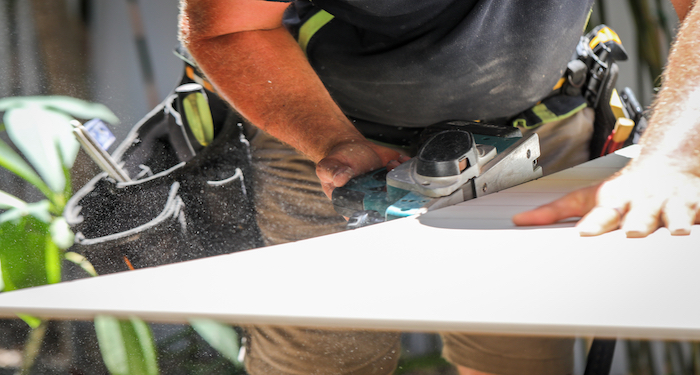
Most of your bill would be down to the cost of labour as opposed to the price of supplies. The cost per hour would be somewhere around £40 to £80, with it being about £300 to £600 a day.
These cost estimates vary widely because the exact cost per hour/day would largely depend on what the job entails.
How much treating penetrating damp costs in terms of the labour prices would also depend on where you live since prices vary throughout the UK.
On average, labour prices are usually higher in the southeast (particularly in London) but generally below average in, northern England or Scotland.
Benefits of a Damp Survey
If you think your home is suffering from a damp issue, you may benefit from having a damp survey carried out.
A surveyor will come and assess the perimeter of your home and all of the exterior parts of the house for any issues that may allow dampness to penetrate through the walls.
They will then check the inside part of the property and fully assess all of the interior walls, flooring, and ceiling for any signs of dampness.
Based on their findings, you will be able to hire the correct professional to fix your damp issue.
If you choose to get a damp survey carried out, expect to pay on average between £180 - £450 depending on the size of your house.
What is The Difference Between Penetrating Damp & Rising Damp?
Penetrating damp and rising damp are both caused by moisture entering your home but are caused by different things and should be treated in different ways.
Penetrating Damp Overview
Penetrating damp happens when water creeps through the walls from the outside inwards. It is usually caused by faulty roofs & gutters as well as cracked render or damaged brickwork. This type of damp can happen at any height on a wall.
Penetrating damp is usually an easier and cheaper issue to fix compared to rising damp.
4 common signs you have a penetrating damp issue:
- Peeling paint or wallpaper.
- Damp patches on your walls or ceilings that get worse when it rains.
- Patches of discolouration or mould.
- Damp, musty smell in a room.
Rising Damp Overview
Rising damp happens when water rises up from the ground into your walls. It is usually caused by a missing or damaged damp cause proof (DPC). This type of damp is usually seen on the lower parts of your walls.
Rising damp treatments are usually more labour heavy and therefore will cost more to solve the problem.
4 Common signs you have rising damp:
- Flaking paint or wet, salty marks.
- Stains on the lower parts of your wall.
- Wet Patches on your floors or skirting boards.
- A musty smell near the floor.
In both instances, it is best to get a specialist to look at your property to understand what needs to be done to fix your damp issue.
How Long Does a Penetrating Damp Treatment Take?
Let's look at the work involved in treating penetrating damp and the factors that shape these timeframes.
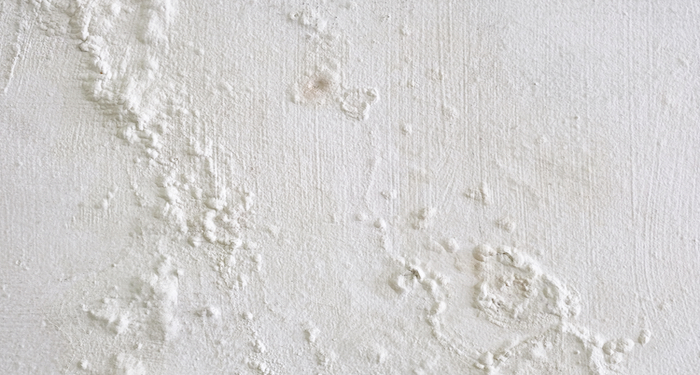
The exact work duration would depend on the extent of the damage, the scale of the job and the method used.
Timeframes of Penetrating Damp Treatment
| Job Description | Duration |
|---|---|
| Mending Window Seal/Gutter* | 1-2 hours |
| Clear a Blockage | 1-2 hours |
| Adding a Basic Cavity Tray | 2-8 hours |
| Fresh DPC for a 1 Metre Wall | 1-2 days |
| Fresh DPC for a 5 Metre Wall | 2-4 days |
| Exterior Damp Proof Painting a Wall | 4-8 hours + |
| Damp Proofing External Walls | 2-5 days |
Types of Penetrating Damp Treatments
We’ve looked at the pricing and timeframes of various forms of penetrating damp treatments so lets look at these including a breakdown of their pros and cons.
Unblocking or Repair Guttering and Downpipes
Sometimes the solution will be as simple as unblocking or repairing guttering and downpipes.
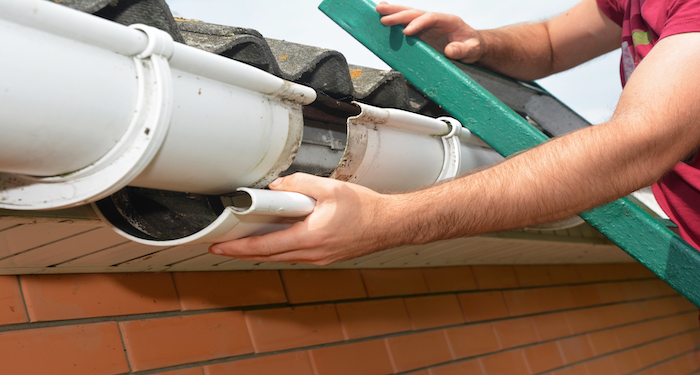
On average, this would cost around £150 to £250. These are low-cost and straightforward solutions to penetrating damp. However, it’s possible that this work alone won’t suffice. If in doubt, hire a professional.
Damp Proof Membrane
This type of DPC features polyethene sheets. These sheets can prevent moisture from getting through. Dampproof membranes are most commonly used underneath concrete flooring as a way to prevent floor dampening as a result of capillary action.
These membranes can also protect concrete from damage that could occur during building work. A damp proof membrane is perfect for a concrete floor that sits above the underfloor heating.
Concrete does however take longer to dry out if this form of DPC has been applied. Dampproof membranes cost around £1 to £5 per m2, with the liquid form of the product costing £1 to £5 per litre.
DPC Injections
DPC injections can create a moisture-resistant barrier as a way to stop penetrating damp and protect the walls from damage. A 100ml DPC injection cream product would cost about £5 to £7.
DPC injections are however not well suited for use on stone walls. It's also crucial to apply correctly. If in doubt, hire a damp proofing specialist.
Cavity Tray
Cavity trays are a type of PDC. It crosses the cavity of a cavity wall as a means to stop dampness from penetrating the interior of a wall. A cavity tray is a lightweight, single-element system. It can also prevent damp penetrating under the roof life.
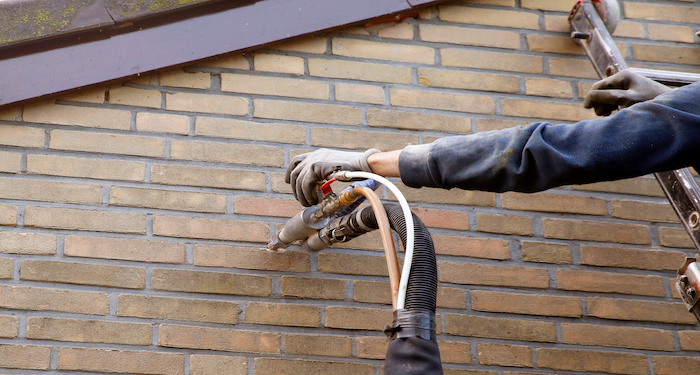
It's important for a cavity tray to be fixed directly above the door head or window for the correct installation. A basic cavity tray would cost around £20 to £100.
FAQs
Q: What does penetrating damp look like?
A: The most common symptoms are damp patches on walls/ceilings, damp staining on external walls, and plaster that is wet and crumbling.
Q: How long is damp proofing usually effective?
A: Damp proofing courses tend to be effective for some 20-25 years, but it will depend on factors like the type of DPC and the building itself.
Q: What’s the difference between a DPC and damp treatment?
A: They are more or less the same thing. Dampproof courses are each a type of damp treatment.
Q: What actually causes penetrating damp?
A: The exact causes can vary, but some common examples are porous walls, building defects and degraded mortar or/and spalled bricks.
Q: Where should I check for signs of penetrating damp that I might not have considered yet?
A: If you haven’t already, try checking your loft for evidence of water penetrating through the roof. If possible, you should also consider evaluating moisture levels in your home two times a year using an electronic moisture meter.
If you have any doubts, you should hire a specialist. A damp survey would help evaluate any issues present in your home that need to be addressed, including in places you may have overlooked.

